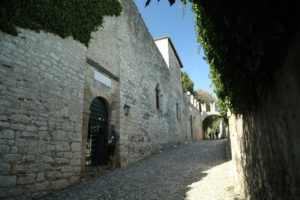
 The Monte Argentario peninsula, located in the southern part of Tuscany, is one of Italy’s most stunning yet often overlooked destinations. Surrounded by the Tyrrhenian Sea, this rugged and mountainous region offers a delightful combination of crystal-clear waters, scenic landscapes, charming harbors, and historical sites. In this article, we’ll explore the key attractions of Argentario, what to see, where to go, and how you can make the most of your visit to this spectacular part of Tuscany. We’ll also discuss the best way to reach Argentario, including a convenient transfer from Rome to Porto Ercole, one of its most charming coastal towns.
The Monte Argentario peninsula, located in the southern part of Tuscany, is one of Italy’s most stunning yet often overlooked destinations. Surrounded by the Tyrrhenian Sea, this rugged and mountainous region offers a delightful combination of crystal-clear waters, scenic landscapes, charming harbors, and historical sites. In this article, we’ll explore the key attractions of Argentario, what to see, where to go, and how you can make the most of your visit to this spectacular part of Tuscany. We’ll also discuss the best way to reach Argentario, including a convenient transfer from Rome to Porto Ercole, one of its most charming coastal towns.
A brief overview of the Monte Argentario peninsula
Monte Argentario is a large promontory on the coast of Tuscany, connected to the mainland by two narrow strips of land known as tombolos. These tombolos create a lagoon between the Argentario peninsula and the mainland, called the Orbetello Lagoon. The area is renowned for its diverse landscapes that combine hills, forests, and a rugged coastline dotted with sandy beaches, rocky coves, and small fishing villages. Monte Argentario’s strategic location along the Mediterranean made it an important historical and military stronghold. Today, it’s a favorite destination for tourists seeking a quieter, more nature-focused retreat in Tuscany compared to the busier cities like Florence or Siena.
Things to see and do in Argentario
1. Porto Santo Stefano
Porto Santo Stefano is the largest town in Argentario and serves as the main gateway to the area. It’s a picturesque harbor town where you can watch boats come and go or take a leisurely walk along the waterfront. The town is known for its historic fortifications, particularly the Fortezza Spagnola (Spanish Fortress), built in the 17th century to protect the coast from pirate attacks. Today, the fortress houses a museum that showcases local maritime history, artifacts, and an impressive collection of model ships. Porto Santo Stefano is also a starting point for ferries that travel to the nearby islands of Giglio and Giannutri, making it an ideal base for exploring the Tuscan Archipelago.
2. Porto Ercole
Porto Ercole, a charming fishing village, is one of the most beloved spots on the Argentario peninsula. With its narrow streets, pastel-colored buildings, and serene atmosphere, Porto Ercole retains an authentic charm that has attracted both locals and international visitors for centuries. The town is also famous for its historical significance; it was here that the famous Italian Baroque painter Caravaggio died in 1610. Key sights in Porto Ercole include the Forte Filippo and Forte Stella, two fortresses built by the Spanish to defend the coastline. The fortresses offer spectacular views of the sea and the surrounding landscapes. In Porto Ercole, you can enjoy fresh seafood at one of the many waterfront restaurants or take a stroll through its quaint streets.
3. Feniglia Nature Reserve
For nature enthusiasts, the Riserva Naturale Duna Feniglia (Feniglia Nature Reserve) is a must-visit. Located between Porto Ercole and Orbetello, this sandy dune reserve stretches for about six kilometers and is home to a variety of wildlife, including deer, wild boar, and many species of birds. The area is perfect for hiking, cycling, or enjoying a peaceful day at one of the unspoiled beaches. There are several well-marked paths throughout the reserve that lead to secluded beaches and forested areas.
4. Cala del Gesso
If you’re looking for one of the most beautiful beaches in the region, Cala del Gesso is the place to go. This hidden cove is located on the western side of Monte Argentario, and while it requires a bit of effort to reach – a steep 20-minute walk down a path – the stunning turquoise waters and pebbly beach make it well worth the trek. Cala del Gesso is an excellent spot for swimming and snorkeling, and its relatively remote location means it’s often less crowded than other beaches in the region.
5. Fortezza Spagnola di Porto Santo Stefano
The Fortezza Spagnola, perched high above Porto Santo Stefano, offers breathtaking panoramic views of the sea and surrounding hills. This 17th-century fortress was originally built to defend the area from pirate invasions. Today, visitors can explore its well-preserved walls and enjoy exhibitions that highlight the area’s maritime history. The fortress also hosts a variety of cultural events throughout the year, making it a lively center for the local community.
6. Giannella Beach
The Giannella Beach, located on the northern tombolo of Argentario, is one of the most family-friendly beaches in the region. Its long stretch of golden sand, shallow waters, and easy accessibility make it ideal for a day of sunbathing and swimming. The beach is also well-equipped with amenities, including beach clubs, restaurants, and water sports facilities, making it a great option for both relaxation and activities.
Where to stay in Argentario
There are numerous accommodation options in Argentario, ranging from luxury resorts to charming B&Bs and holiday apartments. If you prefer a bustling town atmosphere, Porto Santo Stefano or Porto Ercole are great places to stay, as they offer easy access to both beaches and local attractions. For those looking for a more secluded and peaceful retreat, there are plenty of agriturismi (farm stays) nestled in the hills, offering a chance to experience the tranquility of the Tuscan countryside.
How to get to Argentario
Argentario is relatively easy to reach from major cities like Rome and Florence. The most convenient way to get there is by car, as this allows you the flexibility to explore the peninsula and its surrounding areas at your own pace.
By car
From Rome, the drive to Argentario takes approximately two hours, heading north on the A12 highway and then taking the SS1 Via Aurelia towards Orbetello. From Florence, the trip is slightly longer, around three hours, but the scenic drive through the Tuscan countryside is part of the experience.
If you’re arriving from Rome and prefer a hassle-free option, booking a transfer from Rome to Porto Ercole is highly recommended. Several services, such as RomeCabs, offer private transfers directly from Rome’s airports or city center to the Argentario, ensuring a comfortable and efficient journey. This is especially convenient for travelers who don’t want to worry about navigating public transport or renting a car. RomeCabs provides professional and reliable transfer services, allowing you to relax and enjoy the scenic drive along the coast. Their door-to-door service ensures that you arrive in Porto Ercole or Porto Santo Stefano stress-free, making it an excellent option for visitors who prioritize convenience and comfort.
By train
The nearest train station to Argentario is in Orbetello, which is well connected to Rome and other major Italian cities. From Orbetello, you can take a short taxi ride or bus to Porto Santo Stefano or Porto Ercole.
Best time to visit Argentario
The best time to visit Argentario is during the late spring and early fall when the weather is warm but not overly hot, and the tourist crowds are smaller. The summer months (June to August) are the busiest, with many Italians flocking to the coast for their holidays. While this is a great time to enjoy the beaches, you may find the area more crowded, and accommodation prices tend to be higher. Spring (April to June) and autumn (September to October) offer more pleasant weather for hiking and outdoor activities, and the beaches are still warm enough for swimming. These shoulder seasons also provide a more tranquil experience, allowing you to fully appreciate the natural beauty of the region.
Exploring the surrounding areas
While the Argentario peninsula itself offers plenty to see and do, the surrounding areas are also worth exploring. Orbetello, with its charming historic center and scenic lagoon, is just a short drive from the Argentario and offers a more laid-back atmosphere. The nearby islands of Giglio and Giannutri are perfect for a day trip, offering crystal-clear waters, hiking trails, and fascinating archaeological sites. If you’re interested in exploring more of Tuscany, the nearby Maremma region offers a wealth of natural beauty, including the Maremma Natural Park, ancient Etruscan sites, and quaint hilltop villages like Pitigliano and Sovana.
The Argentario peninsula is a hidden gem in Tuscany, offering a unique blend of natural beauty, historical sites, and authentic Italian charm. Whether you’re interested in relaxing on the beach, exploring picturesque harbors, or immersing yourself in the region’s rich history, Argentario has something for everyone. With convenient options like RomeCabs providing transfer from Rome to Porto Ercole, getting there has never been easier, ensuring that you can enjoy all that this stunning destination has to offer.





Leave a Reply